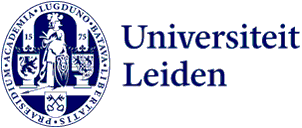
‘Leiden and the university can learn a lot from each other’
We always need to find a new way to tell the story of 3 October, believes Ariadne Schmidt. The professor by special appointment of History of Urban Culture will be working with students to involve more people in the history of that day. ‘I’m too much of a historian to say: we can just let it be a “fun fair”.’
Schmidt has held this chair for five years now, and in that period she’s spent a lot of time with the people in Leiden. ‘I find it incredibly inspiring to engage in public history. We already have a wonderful university where we do academic historical research. If you then bring in people from outside the academic community as well, it opens so many new perspectives.’
Working with residents
During these years, Schmidt has therefore been trying to intensify the collaboration between the university and several other knowledge institutions in Leiden. For instance, she worked with associate professor Alicia Schrikker to involve the residents of the Transvaal neighbourhood in researching its history and, together with students, she has held discussions with Jacintha Groen, the organiser of Keti Koti in Leiden, and Miquela Neyda of Mapping Slavery Leiden. ‘The discussions I have with students in lectures can sometimes be quite academic and theoretical, but asking these women to speak with them really brings the course to life. It’s the same when you actually go into the city. Transvaal might seem like a quaint little neighbourhood, with that railway running right through it, but when you know more about the background, people suddenly say: ‘So I actually live in a historic monument!’
In the years ahead, Schmidt will be doing more research into the historical links to slavery of the university and the city of Leiden. ‘Researching the history of the city and the university in parallel already creates cross-fertilisation, but I feel sure we’ll learn even more by speaking with residents. It then becomes evident that this history still has an impact in the present day.’
What is the story behind 3 October?
Another historical subject that’s always topical here is the Relief of Leiden. Schmidt wants to work on this as well. ‘We’re participating in the Sporen van Drie Oktober (‘traces of 3 October’) project of journalist and writer Ruurd Kok, with the aim of finding a new way to tell Leiden’s story. Two History students and two Archaeology students will be doing research, so it’s also interdisciplinary.’
Ultimately, the aim is to use the opportunity of next year’s 450th anniversary of 3 October to make more Leiden people aware of the story behind it, for instance with podcasts or videos. ‘We already give a lot of lectures, but not everyone comes to listen to them. So you could say: we can just let 3 October be a “fun fair”, but I’m too much of a historian for that. When you’re cycling through the historic city and you know what happened, it all becomes much more alive. You start to understand the society better. That’s something I’d like to keep working on.’
Ariadne Schmidt holds the Magdalena Moons Chair, which is funded by the Magdalena Moons Chair Foundation.
